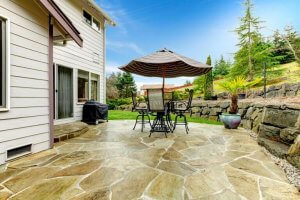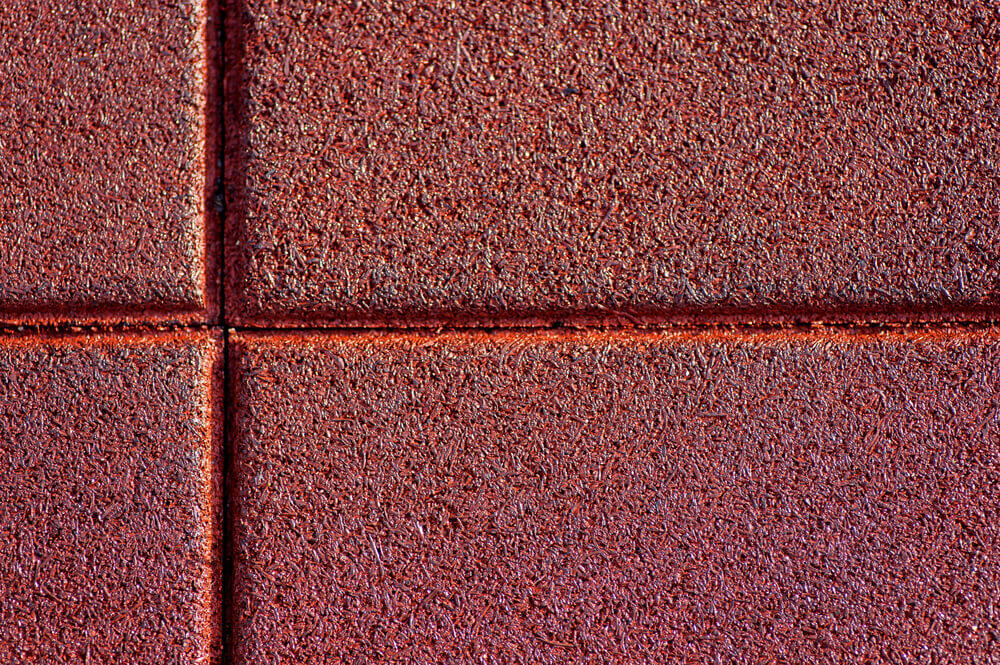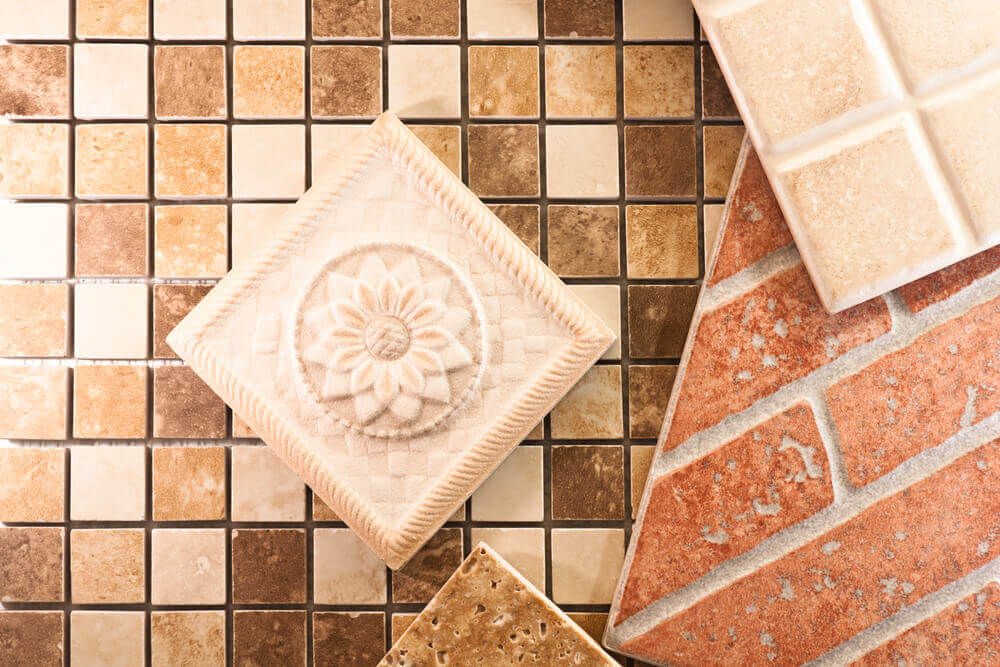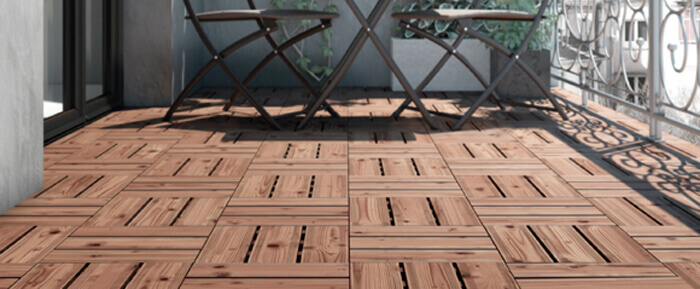Original Floors For the Terrace

In this article, we’re tackling a topic that can help you achieve interesting ideas for your outdoor decoration. We’re talking about original terrace flooring! And the first thing to note is that it’s important to use materials that create a firm, durable, and sturdy floor.
Maybe your terrace floor is old, damaged, cracked, or colorless. Terrace floors sometimes don’t last very long. Because terraces are outside, terrace flooring has to withstand the weather. As a result, poor quality flooring doesn’t last very long.
Firstly, don’t hesitate to change materials. There is nothing better than having a good floor that is long-lasting and doesn’t lose its bright colors. So, we’re going to show you some of the most interesting floors that can help you achieve the right decorative result for your home.
Original wooden terrace flooring
There are several types of wood floors. We’re going to focus on floors made with strips of wood. Laying a wood floor can be very simple. Some manufacturers make pieces so you can easily install them with a clip system. As a result, you can lay them quickly and efficiently.
We recommend using these types of wooden strips. However, the surface for your terrace should be clean and smooth. If the ground is irregular, part of the floor will be sloped. Therefore, the first step is to make sure the ground is ready for flooring.
Also, keep in mind that wood expands, especially in the summer. As a result, we recommend you leave about 15 inches between the wood that makes up the support frame. You should also leave about 1/2 inch in between each piece of wood. That way, you prevent the floor from lifting or cracking.
Wood must be regularly cared for and treated.
Less common but effective types of terrace flooring

Although it may not seem like it, other materials are durable enough for terrace flooring. Let’s take a look at some of the lesser-known flooring options currently available:
- Resin floor – Made of polypropylene fiber, this type of floor also has a polyethylene base. These usually about 2 inches high. Also, you can use this on all types of pavements, even if it’s slightly sloped. Also, some designs make it look like grass!
- Composite flooring – Does this sound familiar to you? It’s not a well-known option. However, it is a great, high-quality choice. Composite floors are resistant to fungi, termites, and mold. A contractor must place this type of flooring on top of a cement layer. It’s essential that it lays flat and has a hard layer underneath.
- Rubber – Without a doubt, this an interesting option for terrace flooring. Today, many places sell recycled rubber. This is a great material for shock absorption. It’s also non-slip. It is great for drainage water and preventing puddles of water.
Ceramic, a classic choice

There is a huge variety of ceramic floors on the market. When choosing, you have to consider the aesthetic quality more than the material itself. This is because almost all ceramic is resistant and durable. In other words, this is a pretty safe bet.
Stoneware flooring is an option that, in addition to being thick and study, has many different color and design options. This type of floor looks great in earth-toned or neutral shades. Of course, you’ll want to avoid any flashy colors.
On the other hand, porcelain is another great option. This material is robust, shiny, and refined. It’s also soft to the touch and stays cool in hot weather. You can also choose between two types – smooth or rough textures. Also, there are a lot of color options.
Original terrace flooring made with pallets

Another interesting solution for terrace flooring is to use pallets. Firstly, you’ll need to sand the surface so it’s smooth to the touch. Then, you’ll also have to polish it so it won’t damage your feet.
One fun decorative option is to put stones inside the pallets. This creates an attractive aesthetic effect. It also adds a touch of nature and fills in any gaps. That’s why we consider it an interesting option for original terrace flooring.
In this article, we’re tackling a topic that can help you achieve interesting ideas for your outdoor decoration. We’re talking about original terrace flooring! And the first thing to note is that it’s important to use materials that create a firm, durable, and sturdy floor.
Maybe your terrace floor is old, damaged, cracked, or colorless. Terrace floors sometimes don’t last very long. Because terraces are outside, terrace flooring has to withstand the weather. As a result, poor quality flooring doesn’t last very long.
Firstly, don’t hesitate to change materials. There is nothing better than having a good floor that is long-lasting and doesn’t lose its bright colors. So, we’re going to show you some of the most interesting floors that can help you achieve the right decorative result for your home.
Original wooden terrace flooring
There are several types of wood floors. We’re going to focus on floors made with strips of wood. Laying a wood floor can be very simple. Some manufacturers make pieces so you can easily install them with a clip system. As a result, you can lay them quickly and efficiently.
We recommend using these types of wooden strips. However, the surface for your terrace should be clean and smooth. If the ground is irregular, part of the floor will be sloped. Therefore, the first step is to make sure the ground is ready for flooring.
Also, keep in mind that wood expands, especially in the summer. As a result, we recommend you leave about 15 inches between the wood that makes up the support frame. You should also leave about 1/2 inch in between each piece of wood. That way, you prevent the floor from lifting or cracking.
Wood must be regularly cared for and treated.
Less common but effective types of terrace flooring

Although it may not seem like it, other materials are durable enough for terrace flooring. Let’s take a look at some of the lesser-known flooring options currently available:
- Resin floor – Made of polypropylene fiber, this type of floor also has a polyethylene base. These usually about 2 inches high. Also, you can use this on all types of pavements, even if it’s slightly sloped. Also, some designs make it look like grass!
- Composite flooring – Does this sound familiar to you? It’s not a well-known option. However, it is a great, high-quality choice. Composite floors are resistant to fungi, termites, and mold. A contractor must place this type of flooring on top of a cement layer. It’s essential that it lays flat and has a hard layer underneath.
- Rubber – Without a doubt, this an interesting option for terrace flooring. Today, many places sell recycled rubber. This is a great material for shock absorption. It’s also non-slip. It is great for drainage water and preventing puddles of water.
Ceramic, a classic choice

There is a huge variety of ceramic floors on the market. When choosing, you have to consider the aesthetic quality more than the material itself. This is because almost all ceramic is resistant and durable. In other words, this is a pretty safe bet.
Stoneware flooring is an option that, in addition to being thick and study, has many different color and design options. This type of floor looks great in earth-toned or neutral shades. Of course, you’ll want to avoid any flashy colors.
On the other hand, porcelain is another great option. This material is robust, shiny, and refined. It’s also soft to the touch and stays cool in hot weather. You can also choose between two types – smooth or rough textures. Also, there are a lot of color options.
Original terrace flooring made with pallets

Another interesting solution for terrace flooring is to use pallets. Firstly, you’ll need to sand the surface so it’s smooth to the touch. Then, you’ll also have to polish it so it won’t damage your feet.
One fun decorative option is to put stones inside the pallets. This creates an attractive aesthetic effect. It also adds a touch of nature and fills in any gaps. That’s why we consider it an interesting option for original terrace flooring.
All cited sources were thoroughly reviewed by our team to ensure their quality, reliability, currency, and validity. The bibliography of this article was considered reliable and of academic or scientific accuracy.
- Avery, Anthony: Ideas y trucos para el hogar, Robinbook, 1997.







